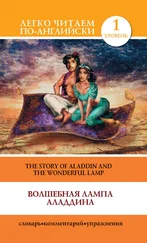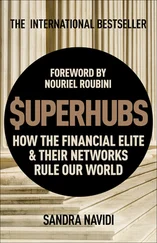Interviewed for a BBC series, the former Governor of the Bank of England, Mervyn King, said: “Money was invented in order to get around the problems of trusting other individuals. But then the question is, could you trust the person who issued the money?” Pressed on whether paper currency was always a flawed system by nature, King was curiously circumspect: “If you'd asked me four, five years ago, before the financial crisis, I would have said no. I think we've now worked out how to manage paper money.” Perhaps in the light of the financial crisis, we should be a bit more cautious, and maybe, to quote Zhou Enlai, another great Chinese figure who when asked about the impact of the French Revolution supposedly said: “, it's too soon to tell.”
Maybe we should say about paper money, after 700 years, that it is perhaps too soon to tell. The point about paper money and inflation is, in fact, a wider one: namely that, over time, no currency keeps its value. This is a fact reinforced by the inability of governments of all stripes to resist the temptation to expand the money supply when the need (or in some cases, the greed) arises. I've used China as an example here because paper money was developed there first, but the same situation can be seen in any economy.
For many years Franz Pick, an Austrian School economist, studied currencies around the world. I remember receiving his annual currency yearbook which had information regarding all the world's currencies. He continued to study currencies all his life. He was the one who said: “No currency holds its value” and was a believer in gold as the best foundation for currency since his experience and studies showed that without a specific commodity base, such as gold, governments would always devalue their currencies.
Governments’ urge to increase the money supply predates the invention of paper money. The idea of coinage is sometimes dated back to the eighth century BC, and their use in Lydia in Asia Minor (modern Turkey). Here, a combination of abundant gold and developments in metallurgy combined to create a system of standardized gold coins. Over the following centuries, the practicalities of using coins in comparison to bullion saw its use spread. But as coinage came into common usage, it wasn't long before governments sought different ways of manipulating the currency for their own gain. Rather than the purity of the earliest gold and silver coins, governments would order the reduction of the value of precious metals, debasing them with other metals or reducing their weight.
In the fourth century BC, Dionysius, the tyrant of Syracuse, who ruled a Greek colony on Sicily, had the brainwave of dealing with rising debts by changing the face of all the local Drachmae. Ordering all coins to be handed in, he restamped each single Drachmae to be worth two (and thus halved his debt at a stroke). He then went on to issue a further set of tin coins, insisting these were valued the same as the silver Drachmae.
Dionysius’ actions are the earliest, or at least one of the earliest, examples of a ruler increasing the money supply for their own ends. Back in China, Wang Mang's short reign as the thirteenth Emperor of the Western Han Dynasty (or the founder of the Xin Dynasty, depending on which historical view you take) was dominated by his economic reforms.
Wang Mang became Emperor in AD 9, but had been acting Emperor for two years before this – the emperor proper, Emperor Ping, was a young child. Wang Mang took advantage to take over as emperor himself. Wang Mang's reign was short (he died in AD 23) but he immediately set about enacting some serious monetary reforms. In the early years of his reign, he nationalized gold and ordered people to hand it in, in return for his new coinage. All private coinage was banned with prison sentences for those who used it. Later on, even those who knew people were using other coinage but didn't report it were imprisoned (as many as 100,000 people were imprisoned under these rules).
As for Wang Mang's own currency, these new coins were markedly debased compared to what they were replacing: in terms of gold, they were worth almost half as much. Added to this, the number of different coins in Wang Mang's scheme was bafflingly complex: there were 28 denominations of coins in total. According to He Liping's account, these actions were less to do with reducing debt than about shoring up Wang Mang's political position at the expense of wealthy nobles. While he might have had some success there, inflation soon followed, as much as can be deduced from the surviving documents of the time: the price of rice rose four times in a year, for example. And despite Wang Mang's best efforts, his subjects stopped using the official currency, instead returning to gold and the coins of the previous regime.
One of the most sustained programs of coin debasement took place during the Roman Empire. Following on from Augustus’ original minting of Roman coins in the form of gold Aureus and silver Denarius, a succession of subsequent emperors took turns in debasing the currency until it was all but worthless. Nero began this process in the first century AD, reducing the silver content and increasing the base metal content in the coins to 10%. Later in the same century, Emperor Trajan reduced the amount of silver in the Denarius still further. The process continued until, during the reign of Antoninianus, the amount of silver in the Denarius was down to just 5%. A century later under Gallienus, the silver content was further reduced, with the Denarius containing one five‐thousandth of the silver from Augustus’ reign. Unable to reduce the silver content in any meaningful way still further, Gallienus’ successor Aurelian increased the face value of new coins two and a half times. The result of this debasement was twofold. First, people kept hold of earlier coins, especially gold ones, as they knew the value of their replacements would decrease. Second, the Roman Empire suffered from sharp inflation. Just as Wang Mang's coin debasement had led to a rise in rice prices, so the Roman debasement saw a rise in wheat prices: rising 32 times in Egypt, for example, between the first and third century, then 44 times in the next 30 years and at an annual rate of 24% in the subsequent decade. Real wages fell, with soldiers increasingly paid in food and clothes, rather than cash. While not the only contributing factor, economic mismanagement was one of many reasons behind the inevitable collapse of the Roman Empire.
Over a millennium later, the same mistakes were being made again, this time by Henry VIII, King of England between 1509 and 1547. In the latter part of his reign, financial problems led to the decision to debase the currency. The process began in Ireland in 1536, with silver coins minted with 90% of precious metal in comparison to earlier coins. This first debasement having passed relatively unnoticed, Henry and his successors tried the trick again – six times in total under Henry, six under his successor Edward VI, then two further mintings under Mary I and Elizabeth I, respectively. Between 1544 and 1551, under Henry and Edward, the process was the most advanced and became known as the Great Debasement. By the end of the process, the value of a silver coin had been reduced to just a quarter of its previous worth. Inflation, of course, continued to grow: in the 1530s and 1540s, it grew by about 29% in comparison to the 20 years before; in the two decades that followed, it grew to 91%. Once again, there is evidence of people holding on to their earlier non‐debased coins, as they knew they were of better value.
Читать дальше












